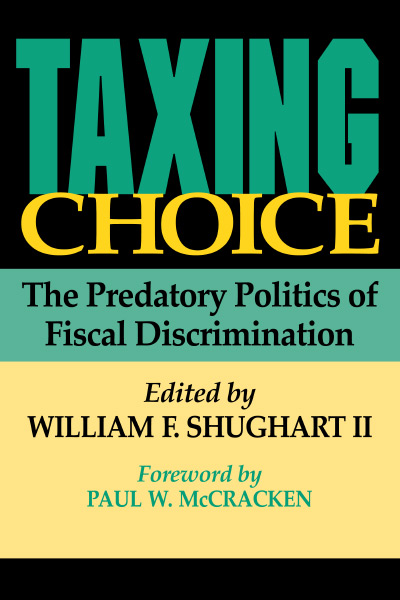President Jimmy Carter signed the Airline Deregulation Act on October 24, 1978. That law phased out the Civil Aeronautics Board (CAB) over the next four years, ending five decades of federal regulation of passenger airfares on interstate commercial flights and entry into the airline industry. One of prime movers behind this first legislative initiative to deregulate a major U.S. industry was Alfred Kahn, a respected academic specialist in the economics of regulation from Cornell University’s faculty, then serving as the CAB’s chairman.
Ostensibly intended to protect the flying public against excessive ticket prices, the CAB did no such thing. Evidence began accumulating in the late 1960s and early 1970s that airfares on regulated interstate flights were in fact considerably higher than the fares charged on routes covering the same distance on flights departing and landing within the same state (e.g., California’s Pacific Southwest Airlines, the forerunner of today’s Southwest Airlines), which were not subject to federal regulatory controls.
Moreover, as reported by Nobel laureate George Stigler, in his famous 1971 article published in the Bell Journal of Economics and Management Science (“The Economic Theory of Regulation”), throughout its history, the CAB never saw fit to authorize the entry of any new commercial airline. In consequence, owing to mergers and consolidations of route networks over time, fewer U.S. airlines were flying the skies in 1970 than had been operating when the CAB was created in 1938.
The commercial airline industry thus stood front and center as an example of Stigler’s “capture theory” of regulation, which teaches that, far from being thrust upon unwilling firms to protect the public’s interest, regulation is acquired by and operated in the interest of the regulated industry itself.
As pointed out by other economists, including George W. Douglas, James C. Miller III and Thomas Gale Moore, a fly landed on the regulatory ointment. Because of federal regulation, the airlines could not compete for passengers by cutting airfares below the minimums prescribed by the CAB. (Those minimum airfares were set for the twin purposes of safeguarding the interests of consumers and of guaranteeing that the airlines’ owners earned “reasonable” rates of return on their investments.)
Non-price competition eventually eroded the airlines’ regulatory profits. Each airline sought to increase the number of passengers carried on scheduled flights relative to rivals by offering sumptuous meals (even to those flying “coach) and hired well-known chefs to oversee in-flight meal services. They hired attractive young women as stewardesses, outfitted them with uniforms designed by notable couturiers (readers of a certain age will remember Braniff Airlines’ “When you got it, flaunt it” advertising campaign featuring “stews” in hot pants), superannuated them on their 30th birthdays, and put them on notice that personnel actions would be taken if they gained too much weight.
But the most salient cost-raising aspect of non-price airline competition was the incentive to offer passengers, especially business travelers, a variety of convenient departure and arrival times between major cities. Doing so required purchasing more aircraft and hiring more pilots and other aircrew members. The upshot was that only half of the seats on a typical flight were filled (a 50 percent “load factor,” in airline jargon).
Towards the end and recognizing that the CAB could not protect their profits, the airlines asked to be deregulated. A possibly apocryphal story suggests that the airlines’ request was supported by Nevada’s congressional delegation owing to the CAB’s perceived failure to authorize more flights to land in Las Vegas.
Prompted in part by Alfred Kahn’s testimony, Congress passed the Airline Deregulation Act and President Carter signed it into law on October 26, 1978. Because of the stagflation and “malaise” gripping the economy at the time, President Carter justified his action publicly as an initiative that would help fight inflation. That explanation was, of course, nonsensical, but Mr. Carter was trained at the Naval Academy as a “nuculer” (his Georgian pronunciation of “nuclear”) engineer, not as an economist.
It is important to emphasize that the Airline Deregulation Act did not undercut the regulation of aircraft safety by the Federal Aviation Administration (FAA) while deregulating the CAB’s economic controls over airfares and market entry. Safety (measured by the number of airline accidents and passenger injuries and deaths per mile travelled) has been rising secularly for many years so that flying is about the safest travel mode on the planet; it is certainly much less risky to board a plane to Granny’s house for Thanksgiving than to drive there.
At the end of the day, however, October 24th is a date that should be celebrated for relaxing the federal government’s regulatory death grip on the American economy. Few examples of deregulation exist. Another, for which thanks also are owed to President Carter and to Senator Ted Kennedy, is the sun-setting of the Interstate Commerce Commission, established in 1887 to oversee railroad pricing and later given authority to regulate over-the-road motor carriers and interstate pipelines.
Although flying coach nowadays is like riding a Greyhound Bus, airfares are significantly lower, thereby making flying affordable to many more people. One can lament the loss of some of the benefits of regulation, such as meals in coach, attentive cabin attendants, and lots of empty seats, but most people probably prefer lower airfares to the higher ones that regulators previously forced them to pay.






